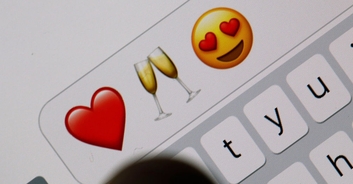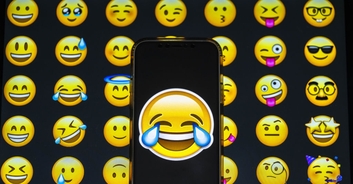In this day and age, we don't use words to express our emotions. Instead, we opt for the use of emojis in order to get our point across. While for a lot of people this may seem like a confusing new language, for those of us who have grown up in this digital age, emojis are commonplace in our day-to-day lives.
Such is the importance of emojis in modern day language, 2015 saw the "Face with Tears of Joy" emoji be chosen as the Oxford Dictionaries Word of The Year. Writing about the reasoning behind the bizarre selection, the company said:
"This year, instead of choosing a traditional word, Oxford Dictionaries has chosen a pictograph, the ‘Face with Tears of Joy’ emoji, to reflect the sharp increase in popularity of emoji across the world in 2015.
"Although emoji have been a staple of texting teens for some time, emoji culture exploded into the global mainstream over the past year.
"Whether it was Hillary Clinton soliciting feedback in emoji or on-going debates about the skin tone of smiley faces, emoji have come to embody a core aspect of living in a digital world that is visually driven, emotionally expressive, and obsessively immediate."
Casper Grathwohl, President of Oxford Dictionaries, also lent his support to the choice, saying:
"You can see how traditional alphabet scripts have been struggling to meet the rapid-fire, visually focused demands of 21st Century communication.
"It’s not surprising that a pictographic script like emoji has stepped in to fill those gaps—it’s flexible, immediate, and infuses tone beautifully.
"As a result emoji are becoming an increasingly rich form of communication, one that transcends linguistic borders.
"When Andy Murray tweeted out his wedding itinerary entirely in emoji, for example, he shared a subtle mix of his feelings about the day directly with fans around the world. It was highly effective in expressing his emotions.”
But, while emojis maybe particularly popular among young audiences, some people still can't quite get their heads around them. For the older generations, emojis are a complex and difficult language to understand.
Take, for example, when my cat died. Rather than sending me a crying face, my auntie genuinely sent me a face that was crying with laughter, saying "sorry to hear about meg ?"
In light of this, an article in The Times of India has published an infographic in which they try and explain the sexual meanings behind certain emojis, with the newspaper recommending that people use emojis "with care."
The rest of the warning reads: "Those new to digital flirting, beware - a purple brinjal [eggplant] may not mean baingan bharta [Indian veggie dish] for dinner, and not everyone squirting teardrops is sad."
The article reveals that a peach is a butt (that much is obvious) and then makes outlandish claims that a fist is self-pleasure (wot?), a letter in a box is sex (huh?) and that a camel, of course, is also sex (hmm).
Understandably, the tweet went viral with plenty of people being perplexed by the suggestions
So, be warned, using emojis is a dangerous game. Next time you think about texting your friend a fist in order to confirm your plans, they might get the wrong idea.



.jpg_fu0e0W?tr=h-184)